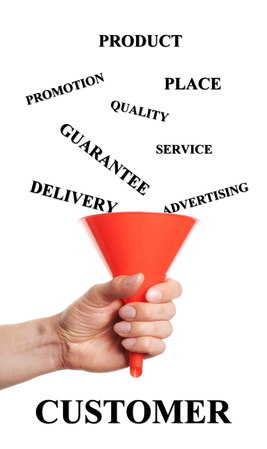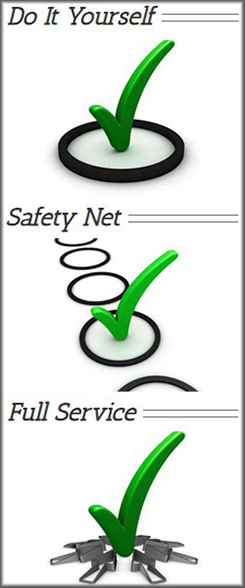Customer Measurement Problem 9
IGNORING CUSTOMER ACQUISITION DYNAMICS
Jump To Page – Intro, 1, 2, 3, 4, 5, 6, 7, 8, 10, 11, 12, Conclusion
 The points raised so far touch upon at least three broad groups of critical interest: prospective customers, current customers, and former customers. For simplicity, let’s refer to them respectively as precustomers, customers, and post-customers. Those categories also allow us to shift from a “between groups” perspective, to a “within subjects” perspective. Rather than thinking in terms of separate groups, any given individual customer is somewhere in the process of moving through those three broad stages. Someone first is a pre-customer, then becomes a customer, then eventually may become a post-customer. When considered that way, we have a three-stage simplification of a topic discussed frequently in CRM and other marketing circles, namely the notion of the “customer lifecycle.” A lot of recent talk in both academic and practitioner circles has centered on understanding the lifetime value of customers across the customer lifecycle.
The points raised so far touch upon at least three broad groups of critical interest: prospective customers, current customers, and former customers. For simplicity, let’s refer to them respectively as precustomers, customers, and post-customers. Those categories also allow us to shift from a “between groups” perspective, to a “within subjects” perspective. Rather than thinking in terms of separate groups, any given individual customer is somewhere in the process of moving through those three broad stages. Someone first is a pre-customer, then becomes a customer, then eventually may become a post-customer. When considered that way, we have a three-stage simplification of a topic discussed frequently in CRM and other marketing circles, namely the notion of the “customer lifecycle.” A lot of recent talk in both academic and practitioner circles has centered on understanding the lifetime value of customers across the customer lifecycle.
The lifecycle perspective can be very valuable in its implications for customer acquisition efforts. If we clearly identify the subset of most profitable long-term current customers in our customer data base, we can create a profile characterizing those “most desirable” customers. Now we can use that profile to target pre-customers with similar profiles. Thus by studying current customers from a lifecycle perspective, we can extract information that helps guide the way we approach very targeted acquisition of pre-customers.
In fact, this profile also can help us study why we sometimes are unsuccessful at customer acquisitions. There may be many pre-customers with characteristics like those of our best customers, who for whatever reasons do not choose to become our customers. They may choose a competitive alternative for example. Wouldn’t we want to understand the choice dynamics and competitive considerations taking place in that segment of precustomers too? Again the lifecycle-based desirable profile helps us target who to study in this kind of “lost prospect” research.
Note that this line of thinking is different from traditional generic acquisition-related marketing research. Often, market research may seek to understand stages of standard consumer behavior models (awareness, consideration, choice, etc.) to find ways to acquire customers – period. The lifecycle approach offers a sharper focus. It helps not to win just any customers, but to win the kind we can keep and grow across time.
Consider for example the long distance telecom sector in the 90’s. Offers and checks were flying left and right causing people to switch providers. But did the switchers stay? Were acquisition costs ever recovered to the point where profitable revenue was earned for sustained periods of time? In fact, promotions brought in the wrong kind of new customer – people who had just demonstrated their willingness to switch for a sweet enough deal! What if the telecoms instead had tried to understand the “type” of customer that comes in stays in for the long haul? What if they had then studied the choice processes and dynamics of that particular type of pre-customer? Wouldn’t that have been a far better target group to go after?
Again the focus is much sharper when we use current customer intelligence to help fuel the acquisition process. It is not about acquisition in general. It is not even about going after those with the highest probability of signing up. It is about going after those who will sign up, stay in, and be excellent profitable customers across long lifecycles.
Simple tactics can help move companies in this direction. If we stratify the current customer base according to customer tenure, then try to select newer customers who fit the profile of our best longer term customers, we can intentionally over sample that particular subset, and in our customer measurement processes begin to ask some critical questions about their choice processes. What other companies were they aware of? Did they shop? Who else did they consider? What inputs were used in the final decision? What had the most impact on that decision? Did discounts, promotions, convenience, and other factors play a role? This will at least be a start to help fuel smarter acquisition efforts.
Also, there are those pre-customers with the desirable target profile that did not choose us. Presuming we can identify those “lost prospects,” we can build a sample frame and survey them with the same kinds of questions described earlier. What other companies were they aware of? Did they shop? Who else did they consider? What inputs were used in the final decision? What had the most impact on that decision? This kind of information can be extremely important in driving more successful acquisition of more ideal new customers.
It also is informative to note that this focus on pre-customer acquisition really is a mirror image of what was done with post-customer defection. In the latter, we wanted to know who left and why. If some were the kinds of customers we would like to have kept, we needed to learn the root causes that made that subset leave, and to respond to those issues to save any desirable current customers who might be at-risk. And, we wanted to avoid acquiring undesirable customers who might come into the fold only to leave. Now, regarding acquisition, we want to understand customers who stay and are profitable for the long haul. Those are the kinds of customers we do want to acquire. We want to understand why pre-customers ofthat description do or don’t choose to do business with us. Then we can begin to manage the acquisition process strategically in an attempt to acquire desirable, profitable, long term customers.




